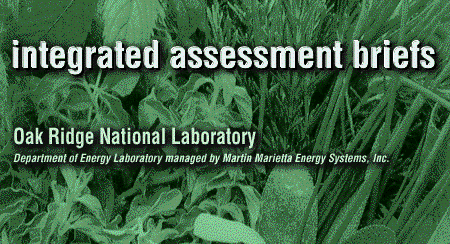
Integrated assessment is a process that can be used to evaluate and clarify resource management policy options and outcomes for decision makers. The defining characteristics of integrated assessment are (1) its focus on providing information and analysis that can be understood and used by decision makers rather than for merely advancing understanding and (2) its multidisciplinary approach, using methods, styles of study, and considerations from a broader variety of technical areas than would typically characterize studies produced from a single disciplinary standpoint.
Integrated assessment may combine scientific, social, economic, health, and environmental data and models. By its nature, integrated assessment requires bridging the gap between science and policy considerations. Because not everything can be valued using a single metric, such as a dollar value, the integrated assessment process also involves evaluating trade-offs among dissimilar attributes.
Although the term "integrated assessment" is a relatively new one, the approach embodied in the term is not new. Scientists at Oak Ridge National Laboratory (ORNL) recognized the importance and value of multidisciplinary approaches to solving environmental problems early on and have pioneered the development of tools and methods for integrated assessment over the past three decades. Their extensive experience in environmental impact assessment and in the development of ecological and regional-scale risk analysis, regional and global-scale modeling, uncertainty analysis, and radiological hazard assessment have brought together scientific, engineering, economic, and social science expertise, making ORNL unique among research institutions.
Major examples of ORNL's experience in the development of its capabilities for integrated assessment include the following:
Each brief poses a research question and summarizes the findings of the research, giving references and contact names for readers who wish to obtain further information. Should you wish to acquire publications or other information mentioned in Integrated Assessment Briefs, please contact Virginia H. Dale, Associate Director, Environmental Sciences Division, Oak Ridge National Laboratory, Building 1505, MS-6035, Oak Ridge, TN, 37831-6035. Telephone: (423) 576-8043; fax: (423) 574-7287.
David E. Reichle
Associate Director
Life Sciences and Environmental Technologies
Oak Ridge National Laboratory
Integrated Assessment Briefs. 1995. ORNL/M-4227. Oak Ridge National Laboratory, Oak Ridge, TN.